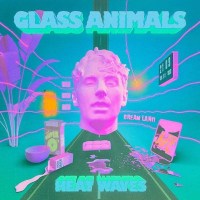

For years, it was a given. If an artist had a CHR hit, there would almost certainly be a follow-up, maybe even on the first Tuesday after that song peaked. There were only a few typical exceptions — artists at the end of an album project that had already yielded multiple hit singles; occasionally an artist from so far outside the Top 40 world that there wasn’t a suitable follow-up available.
Sometimes a follow-up was forced up the chart solely on the momentum of the previous single, hyped to No. 10 or No. 5 and then disappearing quickly. But many of our current Classic Hits warhorses were second singles (“Livin’ on a Prayer,” “Don’t Stop Believin’,” “In the Air Tonight,” “Your Love,” “Another One Bites the Dust”) or from deeper within an album (“Africa,” “Summer of ’69,” “Free Fallin’”). Being able to top a debut hit could propel an artist to stardom. But even having the follow-up that just made it to No. 10 would at least keep an artist in play until the next project.
But as the promotional landscape shifts, a CHR follow-up even to the biggest hit is not guaranteed. At least two of last year’s biggest CHR hits — Glass Animals’ “Heat Waves” and Latto’s “Big Energy” – never had a direct follow-up single. Only eight of the current top 40 CHR songs are direct follow-ups, and that includes songs like Sam Smith’s “Unholy” that are bigger than the song before them.
Overall, out of Mediabase’s top 30 CHR hits of 2022:
- 18 had a traditional follow-up worked; of those, nine are songs that became consensus hits;
- Nine did not have a follow-up officially worked, although a few artists have gotten significant
airplay on other songs anyway; e.g., Post Malone’s “Wrapped Around Your Finger”; - Three have not had a follow-up yet because the artists are either between projects (Doja Cat) or their current hits are still in play (Steve Lacy, Sam Smith).
Those numbers are offset somewhat by the handful of artists who have several viable titles working at once: Harry Styles, Taylor Swift, and now SZA, who impacted two songs this week. But as Top 40 grapples for a steady flow of product, and to create superstar artists, a lack of follow-ups has clear implications for a format that depends on both a steady flow of product and at least a few marquee artists to generate attention.
The obvious explanation is the increased reliance by both labels and radio on TikTok and song streams to determine which songs are worth pursuing. A potential follow-up can be scuttled well before a sound even becomes a song, much less a “radio single.” But even if labels chose to spend the money on a follow-up every time, many broadcasters would now look askance at any song brought to them without a streaming story.
In addition:
- The durability of a relatively small number of hit singles makes labels reluctant to send a follow-up into the buzzsaw of a previous single that won’t stop testing. In the past, an artist whose follow-up was upstaged by an ongoing hit was more likely to be a developing act. Now, it can be the Weeknd. Glass Animals’ “I Don’t Wanna Talk (I Just Wanna Dance),” a great potential follow-up, had fallen off the Alternative chart long before “Heat Waves” peaked.
- A lack of programmer enterprise makes it less likely that anybody at radio will be listening to a project for potential follow-ups, although both Harry Styles’s and Taylor Swift’s recent albums have songs that received play ahead of being worked.
- An increased number of “comeback” songs spurred by TikTok and/or streaming by inactive
artists mean that many artists aren’t even on schedule for new product, although Sia has just
followed “Unstoppable” with the sync-generated “Titanium (Megan’s V3rsion).” But there’s no new Kate Bush single yet. - Spotify rules favor just-released product over a song that has been sitting on an album for several months, unless there’s a remix, also leading to less singles depth. And there’s less emphasis on albums as an artistic unit (and less likelihood to think of long-term game plans for multiple singles).
Format comebacks in particular depend on both a steady stream of strong product and core acts. Country has both excitement about the amount of product coming from streaming and the artists themselves, including Bailey Zimmerman, whose “Rock and a Hard Place” was an online hit just waiting for “Fall in Love” to peak. There doesn’t seem to be the same excitement about new artists in CHR, and the need for any new artist to come up with two unicorns in a row is part of the issue. It’s also harder for CHR to diversify stylistically when an Alternative or R&B act doesn’t attempt a second pop hit.
The lack of follow-ups is tied to all the challenges that inform the radio/label relationship at the moment. Those issues aren’t likely to change until both parties come up with a new model for working together — one with more radio willingness to champion new music and a lower cost of entry for each new single. It’s hard to know where that discussion will start.
